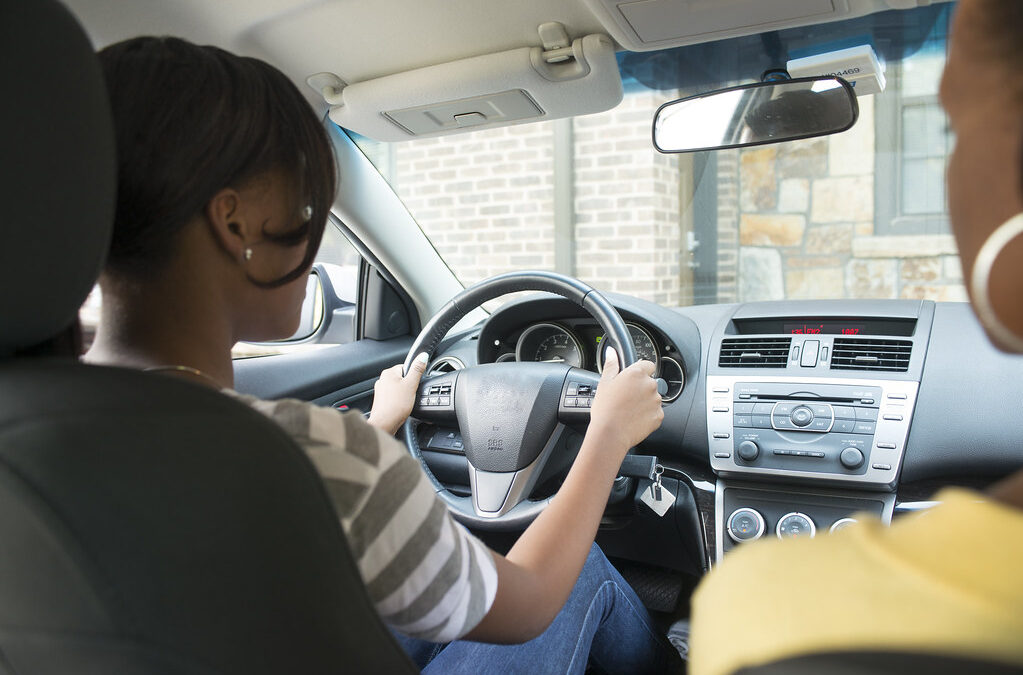Practice Driving Safely
Written By | Doreen Almirol | 20+ years CA DMV Licensed Driving Instructor
Embarking on the journey of learning to drive is an exciting and empowering experience. Whether you’re a new driver or seeking to refine your skills, effective practice sessions are instrumental in becoming a confident and responsible driver.
In this article, we’ll delve into three essential aspects of driving practice – speed management, navigating turns, and incorporating defensive driving techniques – to ensure your time behind the wheel is both educational and safe.
LEARN MORE: Essential Tools for Teen Driving Lessons
1 | Speed Control
Residential and Business Areas
- Maintain Posted Speed Limits: Observe and adhere to posted speed limits in residential and business areas. These limits are designed to ensure the safety of pedestrians, cyclists, and other road users in these densely populated zones.
- Adjust for Conditions: Recognize that speed limits are not one-size-fits-all. Adapt your speed based on weather conditions, visibility, and the presence of pedestrians or other potential hazards.
Parking Lots
- Slow and Steady: In parking lots, prioritize a slow and steady pace (about 5 mph). Be prepared for unexpected movements from other drivers, pedestrians, and parked cars. This cautious approach minimizes the risk of collisions in these confined spaces.
2 | Stops
- Smooth Deceleration: When approaching a stop, decelerate smoothly to ensure the comfort of you and your passengers.
- Complete Stops: Make full, complete stops at stop signs and traffic lights. This not only adheres to traffic rules but also contributes to overall safety on the road.
- Maintain a Safe GAP: When stopping at an intersection, maintain a gap with the car in front of you that allows you to see the bottom of their tires or behind the limit line. This ensures a clear line of sight and contributes to safe following distances.
3 | Turns
Speed and Steering Control
- Controlled Turns: Practice controlled turns by adjusting your speed based on the severity of the turn. Reduce speed (appox. 10-15 mph) before entering the turn, maintain a consistent speed throughout, and accelerate gradually as you exit.
- Smooth Steering: Avoid abrupt steering movements. Smooth and controlled steering enhances your control over the vehicle and contributes to a safer turning experience.
Lane Selection and Yielding
- Left Turns: Yield to oncoming traffic when making a left turn. Enter the intersection only when it is safe to do so. If there’s a dedicated left-turn lane, use it and follow posted signs and signals.
- Right Turns: When turning right, position your vehicle in the right-most lane and yield to pedestrians and cyclists. Check for oncoming traffic and ensure the way is clear before proceeding.
4 | Lane Changes || S.M.O.G.
- Signal First: Always use your turn signal to indicate your intention to change lanes. This alerts other drivers to your actions.
- Check Mirrors and Over-the-Shoulder: Before changing lanes, check your mirrors and blind spots to ensure there are no vehicles in your intended path.
- Go/Glide into Lanes: Execute lane changes smoothly. Avoid sudden movements that can surprise other drivers. Glide into lanes confidently and safely.
5 |Intersections
- Understand Right of Way: Familiarize yourself with right-of-way rules at intersections. Yield appropriately and understand who has the right of way in different scenarios.
- Traffic Checks: Perform thorough traffic checks at intersections. Be aware of potential hazards, including vehicles, pedestrians, and cyclists approaching from all directions.
6 | Defensive Driving Techniques || Vigilance for Safety
Traffic Checks at Intersections
- 360-Degree Awareness: Before entering an intersection, scan LEFT, RIGHT, ahead and behind you. Ensure that you’re aware of all potential hazards, including vehicles, pedestrians, and cyclists, approaching from all directions.
- Anticipate Movement: Anticipate the movements of other drivers and pedestrians. Be prepared to yield or stop if needed.
Lane Changes Around Obstructions (S.M.O.G.)
- Signal and Check Mirrors: Use your turn signal to indicate your intention to change lanes. Check your mirrors and blind spots to ensure there are no vehicles in your intended path.
- Swift and Smooth Maneuvers: Execute lane changes swiftly and smoothly. Avoid sudden movements that can surprise other drivers.
Safe Following Distance
- Use the Every 10mph = 1 Car Length Rule: Maintain a safe following distance from the vehicle in front of you. For example, 30mph = 3car lengths from the car in front of you.
As you venture out for your practice sessions, remember that each moment behind the wheel is an opportunity to refine your skills and build confidence. Embrace these practices, stay vigilant on the road, and enjoy the journey toward mastery of the driving experience.




